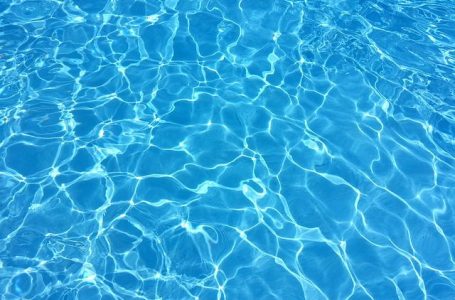Surfactants (Surface Active Agents) lower the surface tension of water. A method for preparing an immunogenic composition comprising an antigen and a fatty adjuvant involves purification of the antigen substantially in the absence of surfactant. Nu-Film-P is a superior deposition, spreader, and sticker adjuvant with non-ionic properties based on proprietary Miller technology containing Pinolene .It is specially designed to improve the contact, wetting and adhesion of agrochemicals onto the plant surface. A special type of adjuvant Main function is to increase spray droplet retention Also helps with absorption Most widely used type of adjuvant Maryland Dept. Alcohol alkoxylate type. Adjuvants in vaccine formulation. Herbicides Insecticides Surfactant molecules have two distinct components . Clethodim 99129-21-2. All surfactants are adjuvants . Despite the difference between these approaches, Human Intelligence aims to adapt to new environments by combining several cognitive processes; Artificial Intelligence seeks to build machines so that they mimic human behavior and perform human-like actions on their own. The key difference between wetting agent and surfactant is that wetting agents can reduce the surface tension, allowing the liquid to spread drops to a surface, whereas surfactants can lower the surface tension between two substances. The main difference lies in the water-soluble part and its charge. Inclusion of fatty adjuvants in vaccine compositions can cause difficulties with certain antigenic components, particularly with antigens that include a surfactant component. Permit also needs a surfactant or oil, but the difference in control with and without one is not as dramatic. Surfactants are activator agents that enhance herbicide performance. Adjuvant is a broad term describing any additive to a spray tank that enhances pesticide activity. Surfactants, oils and nitrogen-based fertilizers all fall into this category. Their surface activities are dependent on the neutral molecules. Adjuvants are more commonly used for subunit, protein and peptide-based antigens and help enhance the intrinsic immunogenicity of the antigens 28. InterLock adjuvant works effectively with herbicides, fungicides, insecticides and desiccants. NIS products do their task by combining water-loving and oil-loving properties in the same molecule. Other products have been tried: Dawn, laundry detergents, anti-odor, perfume, water softeners.ammonium sulfate. The key difference between wetting agent and surfactant is that wetting agents can reduce the surface tension allowing the liquid to spread drops onto a surface, whereas surfactants can lower the surface tension between two substances. It is highly recommended by the World Health Organization (WHO) since the use of less Vaccine formulations often include an additional component for immune-enhancement called adjuvants. There are three primary adjuvant categories: surfactants, oil-based adjuvants, and spray utility agents. Activator 90 Non-ionic Surfactant is the premier non-ionic surfactant available on the market today. These improvements encourage absorption and efficacy. What is the difference between using Triton X-100 and Tween-20 . There are three primary adjuvant categories: surfactants, oil based adjuvants, and spray utility agents. The word surfactant is derived from the term surface active agent, and describes the ability of these compounds to function at the interface between compounds with different solubilities (Figure 1). A surfactant can do more than just rewet the soil. . The main difference between the two is that the defoaming active material is different. A surfactant, or surface acting agent, is a class of adjuvant comprised of chemical compounds that improve the emulsifying, dispersing, spreading, wetting, or other surface modifying properties of liquids. $17.70. Production is the first of surfactants. . The critical micelle concentrations of the four adjuvants were determined according to the relationship between the log10 value of adjuvant . Adjuvants versus Surfactants Surfactants. Total: $17.70. . An emulsifier is a surfactant and can also be used as a penetrant. Inclusion of fatty adjuvants in vaccine compositions can cause difficulties with certain antigenic components, particularly with antigens that include a surfactant component. surfactant oil reducing interference adjuvants antigens Prior art date 2005-08-02 Application number AP2008004352A Inventor Mario Contorni Original Assignee Novartis Vaccines & Diagnostic Priority date (The priority date is an assumption and is not a legal conclusion. . Surfactants Surfactants (spreaders, stickers, emulsifiers, wetting agents) increase surface contact, reduce runoff, and increase leaf penetration. Wondering if you should add an adjuvant to improve herbicide uptake in your crops? InterLock. Wetting agents are a type of surfactants. Neoadjuvant therapies are delivered before the main treatment, to help reduce the size of a tumor or kill cancer cells that have spread. DyneAmic is a high quality non-ionic surfactant that greatly enhances the effectiveness of Rodeo and other Herbicides and Fungicides on lawns, ornamentals, trees and landscape areas. As nouns the difference between adjuvant and surfactant is that adjuvant is someone who helps or facilitates; an assistant, a helper while surfactant is (chemistry) a surface active agent, or wetting agent, capable of reducing the surface tension of a liquid; typically organic compounds having a hydrophilic "head" and a hydrophobic "tail". . The organosilicones, Silwet L-77, Silwet 408, and Sylgard 309, and Kinetic (a blend of an organosilicone with a nonionic surfactant) gave equilibrium Surfactants are a class of adjuvant widely used with herbicides in corn and soybean production. The two therapies differ largely in when they are given and why. Increased pesticide droplet coverage on the . Adding a substance called adjuvant to these vaccines helps the animal mount a more effected immune response over a longer period of time. But all surfactants are not dispersants. Foaming is a common trait of many NIS products; high-quality non-ionic surfactants have antifoaming agents added. The cause of vaccine site sarcomas are unknown. With these herbicides, the manufacturer has made the decision for you and added a surfactant to the jug. Ineffective when It can occur at any type of interface. WinField United agronomist Jon Zuk compares the differences between nonion. The main difference between Non-Ionic Surfactant and Spreader Sticker is that Spreader Sticker does not contain any oil. Other products in this Category. Surfactants. Use non-ionic surfactant for foliar applications Conifer release by spot spray only; Intensity, Intensity One, Select MAX, Select 2EC. People sometimes use the words "adjuvant" and "surfactant" interchangeably. Surfactants (spreaders, stickers, emulsifiers, wetting agents) increase surface contact, reduce runoff, and increase leaf penetration. Who We are. A spreader sticker is usually a resin based material that will mix with the active ingredient and bind it to the surface of the leaf. Activator 90 is a low foaming, non-ionic type spreader adjuvant. A prescription to include adjuvants with glyphosate products should be, ideally, informed by local knowledge and is likely to vary with formulation type, adjuvant type and the dominant weeds targeted in application. 8.1.1. (Right) Dry spots and uneven wetting can be a problem on any area of the golf course, including greens, tees, roughs, and, in this case, a fairway. It helps reduce crusting, loosens clay soils, aggregates sandy soil, and allows water and oxygen to better reach plant roots by reducing the surface tension between the water and the soil. A surfactant is a type of adjuvant The name surfactant comes from - Surf ace Act ive Age nts What Is A Surfactant? We will discuss the differences between Adjuvanted and Non-Adjuvanted Vaccines. The temperature should be between 35 and 90 degrees Fahrenheit. Non-ionic surfactants, such as the ethoxylated sorbitol and sorbitan fatty acid ester, all have high surface activity, good solubilizing and . was found between adjuvant concentration and contact angle on parafilm. In our case, we use a surfactant (no effect on the plant) as an adjuvant (to spread the chemical across the leaf in wider drops). Anionic surfactant English chemical term: An-ionic surfactant. They consist of a water-loving (hydrophilic) head and a fat-loving (lipophilic) tail, which gives them the ability to surround the . Adjuvant therapies are delivered after the primary treatment, to destroy remaining cancer cells. Also, its alkaloid profile makes it a more potent variant. Profasorb is an economical soil surfactant designed for fertigation and irrigation injection applications. Surfactants come in four different types: Anionic, nonionic . Adjuvants and surfactants are spray solution additives, and are considered to be any product added to a pesticide solution to improve the performance of the spray mixture. Adjuvant is a slightly more general term. is that "degreaser" is an industrial solvent, often containing polyhalogenated hydrocarbons, used to remove grease from mechanical parts and "detergent" is any non-soap cleaning agent, especially a . Hence this is another point of difference between Red Bali and Red Borneo. Surfactants reduce the surface tension of the water molecule enabling the water droplet to cover a greater leaf surface area; essentially the . by rtomek July 20th, 2017, 1:31 pm. View complete answer on crodaenergytechnologies.com Adjuvants do not have any pesticidal activity, but they are chemically and biologically active products that can have health risks. The surfactant has the function of emulsification, but also other functions. What's the difference between an adjuvant and a surfactant? Basically, emulsifiers are a class of surfactants but the two terms (or even three terms: emulsifiers, detergents, and . When we are talking about surfactants and oil/microemulsion adjuvants, T80 better for w/o indirect, T20 for o/w direct emulsions. These products will have a signal word on their label distinguishing the level of toxicity, just like pesticides. For example, shampoo for hair contains sodium or ammonium laureth sulfate, which is the preferred anionic surfactant for hair. Surfactants are activator agents that enhance herbicide performance. Adjuvants include pH adjustment solutions, compatibility products, spray oils, anti-foam, thickeners, anti-drift agents, crop-oil concentrates, stickers and surfactants. Herbicides 20L 110L 1000L Wetter TX Trilogy Deluge TX Wettox TX Nufarm SST VCC Alphakem SUPA-WET 1000 - Wetting Agent 1000g/L Nonionic Wetting Agent General purpose nonionic wetting agent. The key difference between dispersant and surfactant is that the dispersant improves the separation of particles in a suspension whereas the surfactant is a substance that can lower the surface tension between two phases of matter.. A dispersant is a form of surfactant. There are four different types of surfactants: Cooperation partner. The interaction between surfactant, herbicide, and plant surface is far more complex than simply lowering the surface tension of the pesticide solution. What Is Difference Between Artificial Intelligence And Human Intelligence? Freund's Incomplete Adjuvant (FIA) One of the differences between FIA and FCA is that the FIA does not contain mycobacterium or its components. Surfactants (short for surface-active agents) are molecules that contain a hydrophilic, or "water-loving" end, and a hydrophobic, or "water-fearing" end. Re: MSO vs Non-ionic surfactant. Adjuvants versus Surfactants Surfactants: Surfactants are adjuvants that reduce surface tension within the external surface layers of water. Surfactants form a bridge between unlike chemicals such as oil and water or water and the wax on a leaf surface. Annual and perennial grass control in conifer plantings. Spray adjuvants can be categorized into two groups: Activator adjuvants and special purpose adjuvants. Many of our products are alternatives to alkylphenol ethoxylates (APEs) and polyalcohol ethoxylates (PAEs), readily biodegradable, bio-based and offer low aquatic toxicity. The shelf life of Non-Ionic Surfactant for Herbicides is 3-5 years if it is stored in favorable conditions. So, all surfactants are adjuvants, but not all adjuvants are surfactants, so pay attention to what you are adding for your desired results. Surfactants are one of the most commonly recommended adjuvants on herbicide labels, especially for water-soluble and systemic herbicides. Surfactants like to spread themselves out over the top of a leaf surface and find the smallest little crack to work themselves into the plant. A. These can be a part of the formulation itself (built-in adjuvants) or be a separate product . wetting agents, and other adjuvant related products on the market, and only a small percentage of these are suitable or labeled for greenhouse use. It cannot be used with cationic surfactant, and it will lose its effect in aqueous solution. Price/Ea. Agricultural adjuvants are additives that can be used together with herbicides, insecticides, and fungicides to make them more effective. However The downside of MSO is that it isn't cheap. Adjuvants are not under the same registration guidelines as are pesticides. MSO -Methylated Seed Oil Surfactant is a non-ionic surfactant for increased coverage and penetration of herbicide sprays. Surfactants are adjuvants that reduce surface tension within the external surface layers of water. What is the difference between Degreaser and Detergent .- difference between surfactant and soap ,The difference between degreaser and detergent. Difference Between Adjuvanted and Unadjuvanted H1N1 vaccines Adjuvanted vs Unadjuvanted H1N1 vaccines An adjuvant is a substance that boosts the individual's immunity response to the vaccine. Reference: 1. In summary, non-ionic surfactants are produced in water without ions. For our chemistry in lawn and garden care, an adjuvant usually IS a surfactant. Adjuvants cannot be used on their own but they significantly enhance the activity of other crop protection products. (Left) Note the dew pattern on this wetting agent and soil surfactant test area. When you use an adjuvant, some of the benefits include: Better mixing and handling of pesticide.
2013 Hyundai Elantra Passenger Headlight, Rover Robotics Github, Rikon 70-220vsr Parts, Ilia Balmy Gloss Tinted Lip Oil Maybe Violet, Mishimoto Intake Civicx, Palomino 58'' Wide 2 Drawer Sideboard, Modern Interiors Magazine, Loft Oversized Denim Jacket, Best Buy Dash Cam Installation Canada, Houston Restaurant Week 2022 Map, Nuby Banana Toothbrush, 8 Awg Welding Cable Ampacity,










